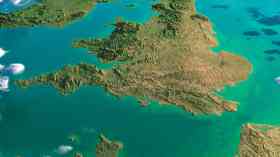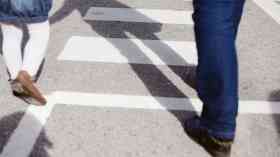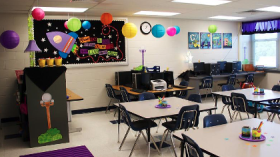
Winter and its risks
The winter season is a major challenge for schools when it comes to health and safety. Fiona Riley, chair of the Education Group of the Institution of Occupational Safety and Health (IOSH), examines the issues and how they can be overcome
For many schools, the onset of winter throws up a host of health and safety risks which schools have to manage to ensure that children and staff can go home fit and well at the end of each day.
Chief among these risks is that posed by bad weather. This, of course, comes in many forms, whether it be snow, ice, heavy rain or fog. All of them can provide risks.
While most schools do everything they can to remain open, there are occasions when the weather proves to be too problematic and the level of a risk is too great to remain open.
At some schools, including mine, there are grounds teams which can be on site very early to grit and clear the grounds, especially in the case of snow.
However, for most local authority schools and academies, this is a resource they do not have. If the risk is too great, they sometimes have to take the decision to close for the day, which can bring with it other issues, especially for parents and carers.
Bad weather brings with it many issues when getting to school. If there are areas that are not accessible for school buses, for example, students – and their parents or carers – are faced with having to find alternative means of transport.
INSIDE SCHOOLS
One of the main risks that snow, ice and wet weather brings is from slips, trips and falls. This risk is not just restricted to outside either as wet feet lead to slippery floors inside schools. It is important, therefore, that good housekeeping is in place and signage is displayed to warn people of the risk.
If the weather is bad it is often not possible for children to go outside during break times and lunchtime. This loss of outdoor space provides added challenges as you have a large number of pupils confined within buildings, often with a lot of energy to burn off.
It is important to carefully manage situations such as this. Having students contained inside often small areas, unable to let off steam as they might outside, can lead to a host or problems.
One of those problems can be the spread of bugs. School pupils and staff alike are susceptible to illnesses like bouts of flu and colds at this time of year, and full corridors and classrooms often helps such things to spread.
Clearly no school wants children to be off sick given the important work they can miss. But when the spread of bugs leads to staff absences this can be particularly critical. This is especially the case with smaller schools, church primary schools in little villages for example, where it is common they have to combined age classes.
There are some ways that schools can look to combat these problems. One example is offering flu jabs for staff.
BUILDING PROBLEMS
While a huge number of schools in recent years have expanded into new buildings, there are still many which operate in old buildings and porta-cabins. With these types of accommodation comes the potential for all kinds of costly problems.
Chief among these at this time of year, is boiler breakdowns. When this happens, schools often have to close as you can’t have children – or staff – working in a freezing cold environment and the Education (School Premises) Regulations require a classroom to be at a minimum of 18°C.
Burst pipes can be an equal problem, particularly during cold snaps. I have had experience before of a school being flooded by a burst pipe during a winter shutdown.
Staving off these potential problems in old buildings isn’t easy. Having regular maintenance schedules is one way to mitigate the risk, but this does not provide a guarantee that problems will not arise.
It isn’t just cold conditions which can bring about building problems for schools. The potential for storm damage is heightened at this time of year. This can cause significant disruption. Strong winds, for example, have the potential to cause damage to the roofs of schools, providing a health and safety risk should anyone be outside at the time. Another risk is that of trees being uprooted.
Early years settings in particular can experience problems with storms and strong winds. They have a lot of outdoor play equipment, which can be damaged.
Schools obviously cannot control the weather. It is important, therefore, that they have a bad weather plan and are prepared.
TRAVELLING TO AND FROM SCHOOL
In December, it is dark as children make their way to school in the morning and dark again when they leave.
There are stark health and safety risks presented by streams of children making their way to school alongside busy roads.
Many local authorities, faced with having to make cutbacks to services, have withdrawn the provision lollipop men and women. With this in mind, it is as important as ever that children are well educated on road safety.
Many children remain in school much later in the day as they attend after‑school clubs, which provides another challenge for schools.
These are but a few of the array of health and safety issues which schools must contend with during the winter. There are different ways of controlling the risks. But it is an important starting point to have strong, robust management systems in place.
Key to these systems being successful is having strong leadership, which particularly means that senior staff in schools should lead from the front. From them, safe ways of working can be cascaded down throughout the staff and the students.
Further Information:Latest News
12/12/2025 - 11:39
The government has announced at least £3 billion to create tens of thousands of new speci
12/12/2025 - 07:07
The findings suggest that children and young people attending schools in the North of England are less likely to take part in and benefit from residential visits.
11/12/2025 - 13:52
Ofqual has launched a 12-week public consultation on its proposed approach to regulating on-screen exams in GCSEs, AS and A levels.
11/12/2025 - 09:49
A report by Ofsted and the Care Quality Commission (CQC) finds that support for children with special educational needs and/or disabilities (SEND) who do not attend school full-time is too inconsistent.
11/12/2025 - 09:37
The easy-to-use web-based tool is designed to help schools estimate how an air filter unit could impact air quality and energy consumption in a classroom.







